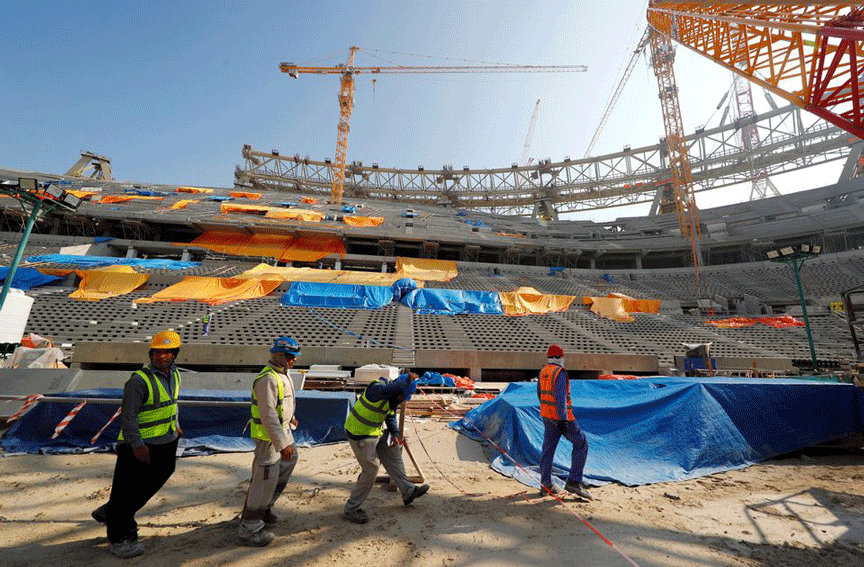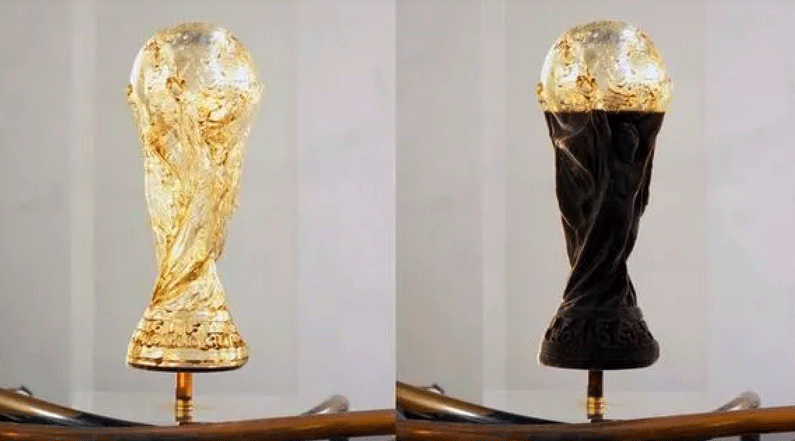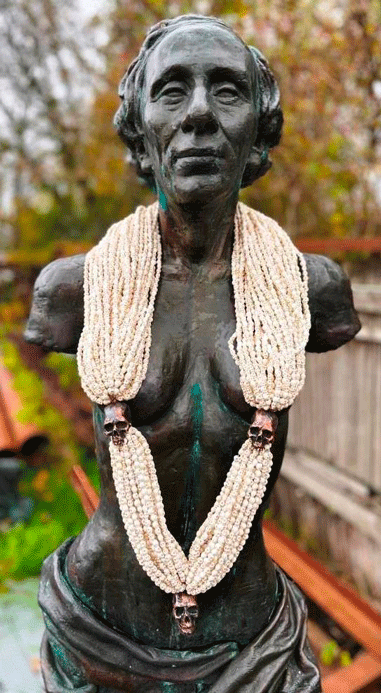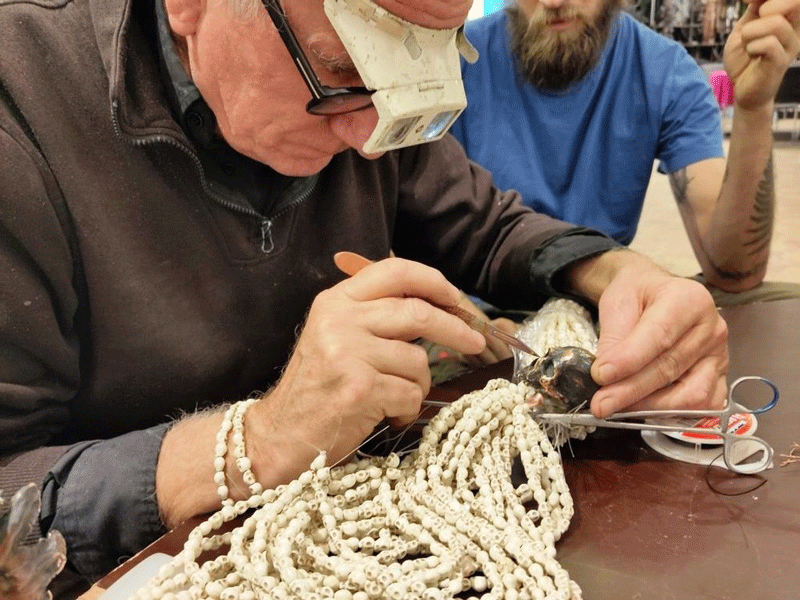$200 billion U.S. dollars and 6,500 migrant workers. This is how much money Qatar spent and how many migrant workers died building the seven new stadiums and facilities for the 2022 FIFA World Cup. Many wonder why a country willing to spend astronomical amounts of money on a sporting event and a country willing to put the lives of workers in danger won the bid to host the World Cup in the first place.
Situated on one of the world’s largest natural gas fields, accounting for around 13% of global oil supply, Qatar is the “richest” country in the world. With a GDP of 221.37 billion USD, Qatar exists at the top of FIFA’s money-hungry mind. FIFA and Qatari officials have long said that Qatar was picked because it is “new lands” for the football world. They said it would be historical for an Arab country to host an event of this stature. Many have refuted this, with the United States’ Department of Justice chalking Qatar’s winning bid up to bribery.
Winning the bid to host the World Cup is just the tip of the iceberg for many angered by Qatar’s hosting gig, with many outraged over the thousands of abused and overworked migrant workers who have died, Qatar’s lack of LGBTQ+ rights and many other various human rights issues.

The 2022 World Cup and its aforementioned issues have become the focus of many artists who aim to bring to light human rights violations and the corruption that exists between FIFA’s governing body and Qatar.
Russian artist Andrei Molodkin and Danish artist Jens Galschiøt have tasked themselves with exposing exactly this.
Just four days before the first whistle was blown to start the 2022 World Cup, Andrei Molodkin unveiled “The Shame Cup,” an almost exact replica of the iconic World Cup trophy. Although nearly exactly the same as the original, Molodkin’s version of the trophy highlights “football's darkest moment,” a moment in which many have realized that the sport that billions love so dearly is much more than a game.

As the trophy sits on display, it slowly fills with crude oil, sourced directly from Qatari oil fields, until the entire trophy shifts from its shiny bright gold colour to black. In filling the trophy with crude oil, Molodkin hopes that this will expose the “crude truth” regarding the corruption that has occurred between Qatar and FIFA officials.
Although heavily based on corruption, Molodkin’s real goal with his “alternative” trophy is to highlight FIFA and Qatar’s lack of care for the United Nations Sustainable Development Goals of Good Health and Well-Being and Reduced Inequalities, as both have exemplified that money comes before the safety and rights of human beings.
With at least 6,500 migrant workers dying in Qatar in preparation for the event, Molodkin states that “FIFA bosses knew about the human rights of workers in Qatar, but for them, oil money is more than blood.” Ultimately, something that Molodkin highlights should never be the case.
No sport, no event and no amount of money should ever come before the lives of human beings. This is what Molodkin hopes people will come to realize.

On the same day that Molodkin unveiled his replica trophy, Jens Galschiøt took on a similar task, aiming to create multiple pieces of art that take a firm stance against human rights violations surrounding Qatar’s World Cup.
Galschiøt has created a large-scale necklace composed of 6,500 miniscule skulls, a skull for each migrant worker that has died in Qatar as direct result of the work to build new infrastructure that would make Qatar’s World Cup dreams a reality.
Although extremely impactful, Galschiøt couldn’t stop at one necklace. Instead, Galschiøt ensured that people could directly advocate for United Nations Sustainable Development Goals like Good Health and Well-Being and Decent Work and Economic Growth over the course of the tournament. In doing so, Galschiøt created individual skull bracelets that anyone can purchase, in which Galschiøt states that “by presenting the bracelet on social media with the hashtag #Qatar6500, or by wearing the bracelet during official visits to Qatar, one makes a clear stand against human rights violations in Qatar.”

The large necklace and the skull bracelets are unique art pieces that Galschiøt hopes will be carried to the 2022 World Cup to emphasize the extensive cost to human life that one country and an extremely powerful sport governing body have caused in order to hold a sporting event, in a country “that doesn’t treat human life with basic universal fairness.”
From the 2018 World Cup in Russia where a corrupt and violent government reigns terror upon its own citizens, to the 2022 Winter Olympics in China, where a government is actively committing genocide against an entire ethnicity of people, to the 2022 World Cup in Qatar, where thousands have died and thousands more have no basic human rights, our society is proving that entertainment and money have come to mean more than human life.
Molodkin and Galschiøt’s unveiling of their respective art pieces highlights that in many ways our society hasn’t progressed any further than when we fed humans to lions for entertainment in Ancient Rome, as now our atrocities are simply masked under a veil of corruption, blood money and entertainment.
So, before you turn on your TV to watch the World Cup this year or before you enter a stadium in Qatar to enjoy the sport that so many love, ask yourself if you care about the United Nations Sustainable Development Goals of Good Health and Well-Being, Decent Work and Economic Growth and Reduced Inequalities, because the “FIFA rhetoric is tinted by oil money. Everyone now has an oil-based blood type, including the actual football players” and everyone who contributes to FIFA and Qatar’s growth.
For more information on Andrei Molodkin and Jens Galschiøt’s art visit their websites galschiot.com and tate.org.uk.
